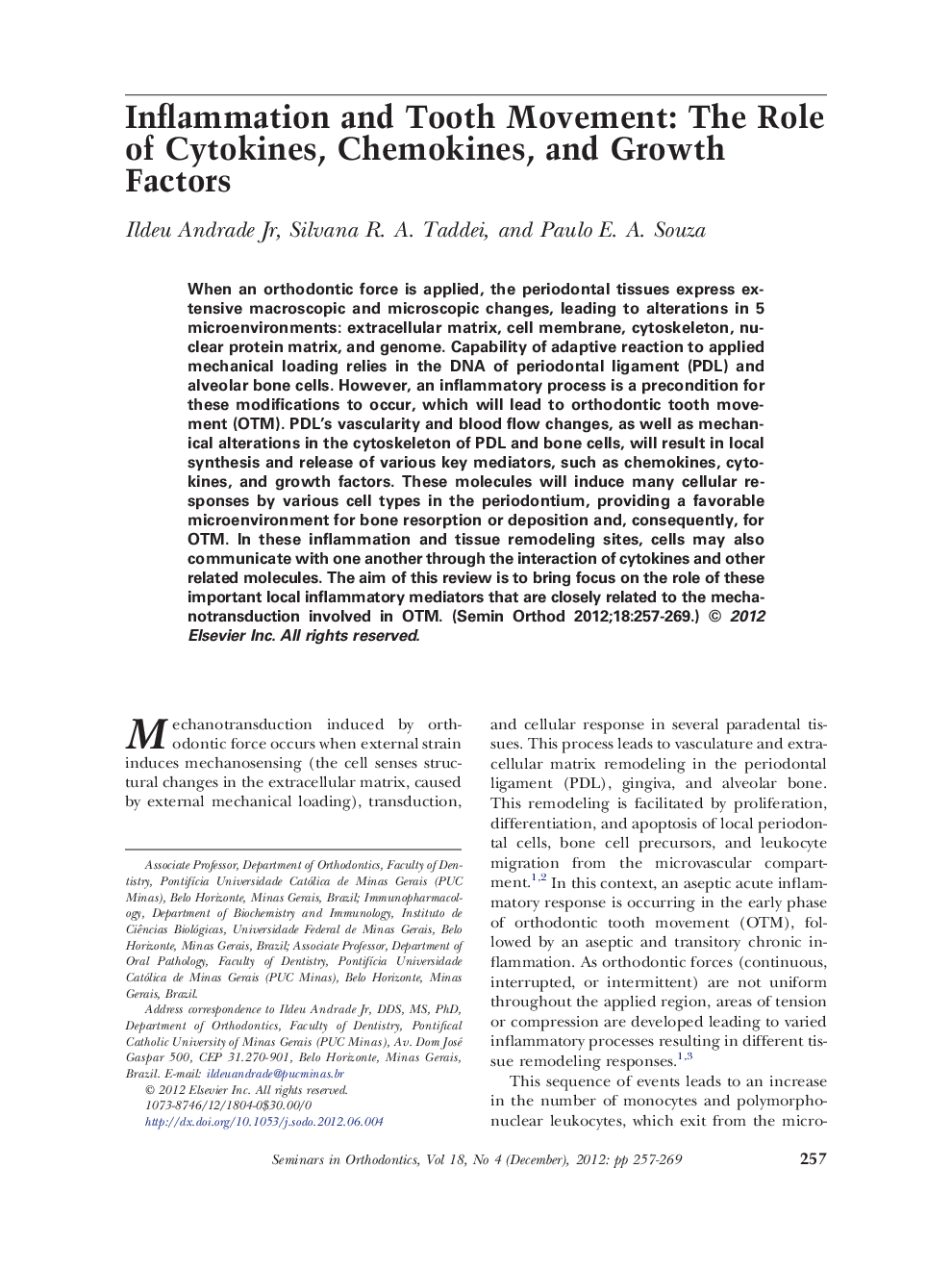| Article ID | Journal | Published Year | Pages | File Type |
|---|---|---|---|---|
| 3175476 | Seminars in Orthodontics | 2012 | 13 Pages |
When an orthodontic force is applied, the periodontal tissues express extensive macroscopic and microscopic changes, leading to alterations in 5 microenvironments: extracellular matrix, cell membrane, cytoskeleton, nuclear protein matrix, and genome. Capability of adaptive reaction to applied mechanical loading relies in the DNA of periodontal ligament (PDL) and alveolar bone cells. However, an inflammatory process is a precondition for these modifications to occur, which will lead to orthodontic tooth movement (OTM). PDL's vascularity and blood flow changes, as well as mechanical alterations in the cytoskeleton of PDL and bone cells, will result in local synthesis and release of various key mediators, such as chemokines, cytokines, and growth factors. These molecules will induce many cellular responses by various cell types in the periodontium, providing a favorable microenvironment for bone resorption or deposition and, consequently, for OTM. In these inflammation and tissue remodeling sites, cells may also communicate with one another through the interaction of cytokines and other related molecules. The aim of this review is to bring focus on the role of these important local inflammatory mediators that are closely related to the mechanotransduction involved in OTM.
